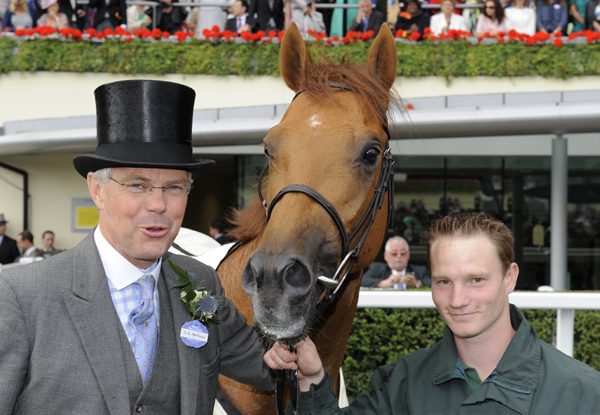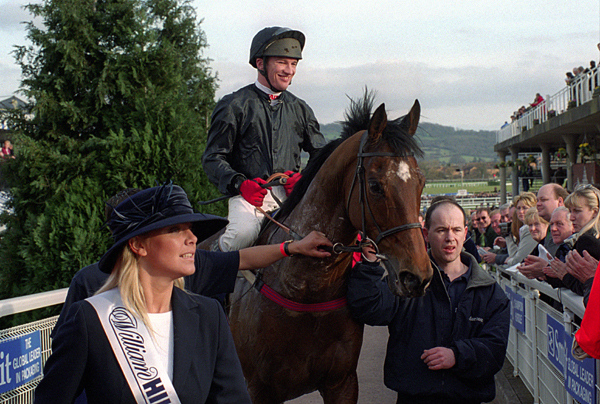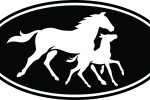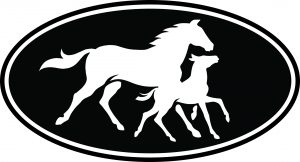Out in the yard, identified from milling third lot by salty hair and neat spectacles framing quizzical eyes, he moved with long purposeful strides, as if stalking on a favourite Scottish hillside. Now, looking out as rain falls gently on his tranquil Berkshire lawns, he clutches a ‘William and Catherine’ mug from a wedding he attended recently.
Without even examining his family tree, there is a sense of breeding imprinted on Hughie Morrison. Not haughty, far from condescending and patently talented enough to have garnered winners at Royal Ascot and Cheltenham, he is nevertheless different from most in the training ranks. But then you listen to him talk, first about himself and then, more ardently, about the sport he has embraced, and you appreciate other virtues.
“I’ve obviously been privileged but I always wanted to train horses and I’m in it to promote racing, not just H Morrison,” he declares. “I want to look after people who share my passion for the sport. I’m accused of having too many strong opinions but I grew up with this sport, I love the industry and I want it to succeed.”
Right now, as is clear to all, the road to success is blocked by a succession of accidents and obstructions. The leadership of racing is increasingly opaque. Would Morrison, 50 years old, with friends and allies in high places and diverse experiences in corporate life as well as at the coal face of racing, consider a political post in the industry?
“I’d like to,” he says immediately. “But I would do it my way and that would roll over a lot of people. The trouble with racing is that it’s all done by committee – and that doesn’t work. I’ve never put myself forward because I don’t want to sit on committees. Mark Johnston is doing it now and Mark and I agree on a lot of things, but the system is not for me.”
He does not rule it out, though. Meantime, Morrison’s considerable energies are devoted to the 80 horses at Summerdown Stables, the yard he bought from Simon Sherwood in 1996 after deciding, somewhat circuitously, that this was the life for him. “I was always craving an involvement in racing; I just felt one was expected to do something more…proper,” he observes wryly.
It was not such a surprise. His father, the second Lord Margadale, bred three Classic winners and, when free from the duties of supervising family estates in Wiltshire and Scotland, seemed to spend much of his time racing. “Dad stewarded at Royal Ascot, Newmarket, Newbury, Salisbury and Bath,” Morrison recalls. “So I was always racing. I remember going to Newbury aged six and just being let loose.
“I had a wonderful childhood. If I wasn’t at Fonthill, I was on the west coast of Scotland. The family owns a third of the island of Islay and we disappeared there for six months each year. It was first bought in 1851, by my great-great grandfather, as an investment. It’s been precisely the opposite, a huge financial drain, but we still manage it now through love of the place. It’s a vibrant island, with a lot of tourism, and we have 70 tenants.”
The idyllic childhood ended at Eton. “I only just scraped in and there was a real pressure to achieve,” says Morrison. “My son, Geordie, later went there and complained at how hard he was made to work, but I think they have it easy now. In my time, if you were failing academically, you were out.”
Even then, racing found its way onto the Morrison curriculum. He says: “I got into trouble for going to Windsor races on a Monday evening – we used to cycle down the river. I couldn’t see the problem and went to the headmaster thinking I held the moral high ground. He partly saw my point, punished me anyway, but said I was free to go whenever I liked.”

Morrison with Royal Ascot winner Sagramor
The uninitiated may wonder, as I did, why young Hughie did not settle for the life of a supported English gentleman, a modern-day Bertie Wooster? “As the younger son, it was never on the agenda for me to take over the family estates,” he points out. “My brother, Alastair, does that. I had to go out and find my way – and there were advantages in being able to do my own thing.”
He was a free spirit, too, as he showed more than once at family gatherings. He says: “Being a political family, we had several prime ministers stay with us in Scotland – Harold Macmillan, Ted Heath and Margaret Thatcher all came. I was 18, still too young to know my place, when I had a big argument at dinner with Mrs Thatcher. I was saying that we should get rid of the House of Lords and have the equivalent of a Senate. Mrs Thatcher, of course, knew she would never get so much done if she had a strong second house.” A little like the Chairman of the BHA keeping the racecourses in their place?
Morrison progressed to a business studies degree. “It taught me to read accounts and gave me valuable experience,” he says. “I had a year out, sponsored by a company that had a jeans outlet in Fulham. One summer, everyone disappeared and I virtually ran it. I stayed with that company after college, travelling around as a corporate analyst, then I worked for myself for a while. Finally, I got involved in a company in Manchester that produced low-energy lighting. The theory was good, the timing dreadful. The company died and I came home and made up my mind it was time for what I’d always really wanted to do.”
He had always had point-to-pointers, which he rode with modest success but enormous enthusiasm. He had also spent a school holiday with Toby Balding, whose late wife, Caro, was his mother’s sister, and even owned a horse or two with his brother. Now, with the corporate doors closing, he wanted to take racing seriously.
“Maybe I’d got to the point where there weren’t many other options,” he recalls. “I knew I would not make a very good employee. I spent two years working for Paul Cole. I wasn’t paid, I just wanted to learn – but you only really learn when you’re training. When the chance came, I was living in Lambourn and simply swapped houses with Simon and Lucy Sherwood.
“I might have been lucky enough to have the finance to do it myself but we started with only eight horses and it was financially negative for the first three or four years. It got to the point of wondering if I could survive.”
Divorce was an added complication and Morrison suffered some tricky years. His second wife has helped greatly in the progress of the yard. Directly descended from William Wordsworth, Mary is also a natural horsewoman. Morrison says: “Flat racing can be very blinkered in certain respects. Mary evented and brings a different eye to it. She spotted Pastoral Pursuits and Pisco Sour.
“Just as important, she encouraged me to keep going. I probably don’t know what ‘tough’ is, do I? But I do need to work, let’s be straight on that. We don’t have an extravagant lifestyle but I do want to maintain it and, in this present economic environment, if you have one bad season, you’re dead.”
This leads him back onto political territory and demonstrates his air of conviction and frustration on racing’s inadequacies. “British racing is too good to collapse but if we don’t support the top level, we might as well give up,” he begins.
“Racing got far too big. We were drawn in by the betting industry, got too close to them. The result was more and more racing, and it has been damaging. It’s destroyed the ground at many tracks and the breed has been weakened – there are too many bad or unsound horses around. Given a blank sheet of paper, I would cut the fixture list by 25% but racecourses, with their managing directors and their marketing executives, have a different aspiration.”
He fires off a few more random thoughts – the “lost opportunity” of the Tote sale, the BHA “losing its teeth”, the potential to offer all top racing to Sky – and once more I am struck by the force of a personality that longs to heal the patient.
For now, though, his concerns are in East Ilsley, where his numbers, like so many otheryards, are down – but the winners are still flowing satisfactorily. There are two yards here, the second built in 2003 to the same traditional designs as the original. Staring out from the top of it is the 16-year-old head of Kylkenny, who retired in 2008 after his 17th course win, for 12 different jockeys, on the all-weather at Southwell.
There are superior horses in the yard, including Sagramor and Pisco Sour, who scored within an hour of each other at Royal Ascot in June. But Morrison, who takes pride in finding homes for all his retired horses, still has a special place here for this one.
“He almost garrotted himself on a gatepost last year but he’s still out with the string every day and he is terrific with the young ones, especially in their stalls training,” he says proudly.
Kylkenny operated at the shop-floor of racing, something his impeccably bred trainer is quite content to do.
“I’ve never seen myself as aristocratic,” he says. “I’ve had privileges, and it’s always easier to approach someone if you know them, but it does have disadvantages, too.”
With his half-century up, and 15 years into a belated training career, he assesses the future realistically. “I love what I do but there are always other challenges. We’re only here for so long. It would be fun to do something else.” Maybe racing politics could lure him, after all?
Special jumpers who kick-started career
Flat racing is, and always was, the dominant part of Hughie Morrison’s business, yet the irony is that he was established on the training map by jumps horses. Specifically, it was the 2002 Cheltenham Festival which alerted people to his skills, Frenchman’s Creek winning the William Hill Chase with insolent ease and Marble Arch finishing second in the Champion Hurdle.
“We still keep half a dozen jumpers around and it amuses me that people feel there is any mystery to training them,” he says. “You just go slower for further. But those two horses were very special, because Mary bred Marble Arch and I bred Frenchman’s Creek.”

Frenchman’s Creek and Paul Carberry
There is an evocative picture in Morrison’s dining room of Paul Carberry returning triumphant to the Cheltenham winner’s enclosure after his three-length win. “That day, he could have beaten anything – he just hacked round,” recalls the trainer. “It was great to watch but I was slightly incredulous. Then he nearly fell at the last. I still have nightmares about that.
“I’d bred him out of a point-to-pointer I had bought, with my father’s assistance, years earlier. But Mary brought Marble Arch into our lives and we had no hopes of him at first – he couldn’t even win a bumper, yet 18 months later he was nearly winning the Champion Hurdle.
“Mary also bred the full-brother, Tom Paddington, who gave me one of my greatest thrills. He’d looked like being a very good horse when he broke down over hurdles. I felt at the time he should have been put down but he spent two years in a field and another 18 months being nursed back through training, before he won first time out at Newbury. You can’t buy that sort of pleasure.”
Morrison has latterly been known for sprinters and stayers – two July Cup winners, Pastoral Pursuits and Sakhee’s Secret, along with the valiant Alcazar, who won a Group 1 marathon in France at the age of ten.
Perhaps the most moving day of all, though, was his first of six Royal Ascot winners, Waverley, in the 2003 Duke of Edinburgh Stakes. Morrison explains: “He belonged to my father, who had died only two months earlier. It was a very emotional time for all the family.”
And one that would have made the late Lord Margadale particularly proud of the Hon Hughie Morris



